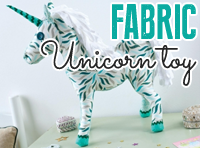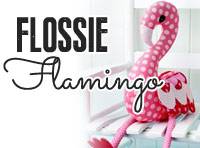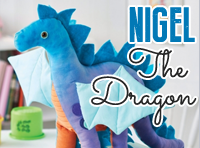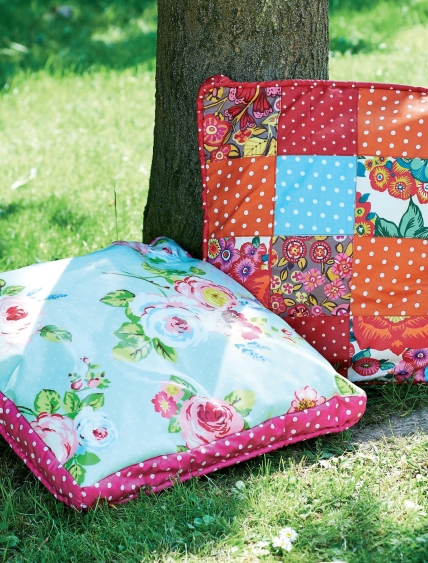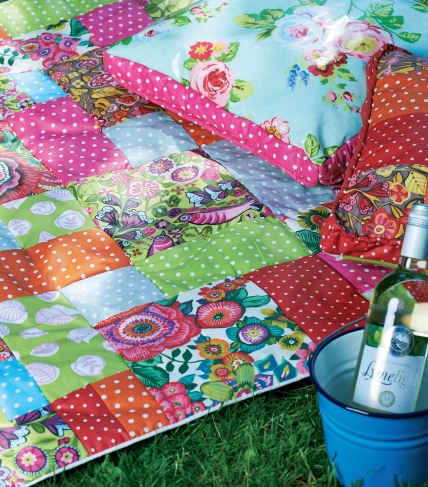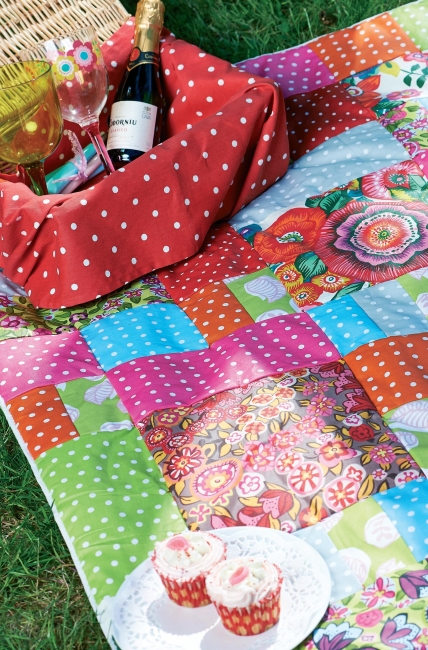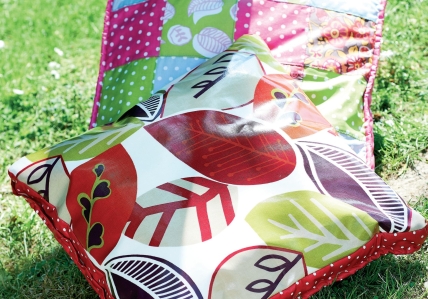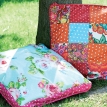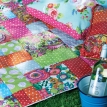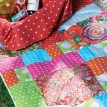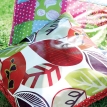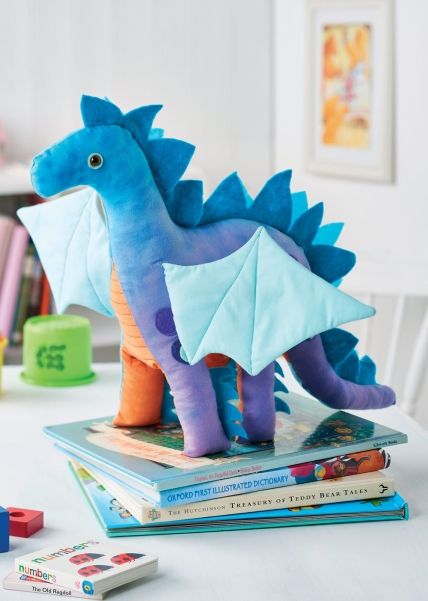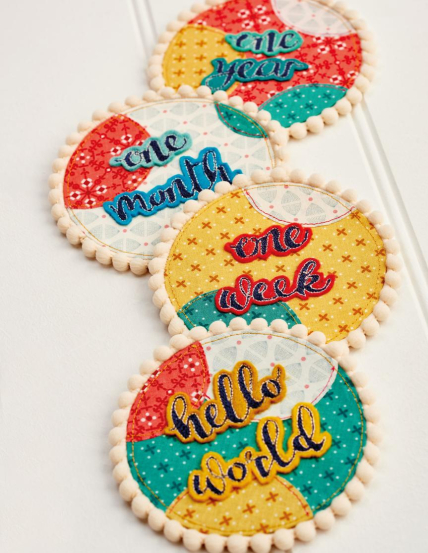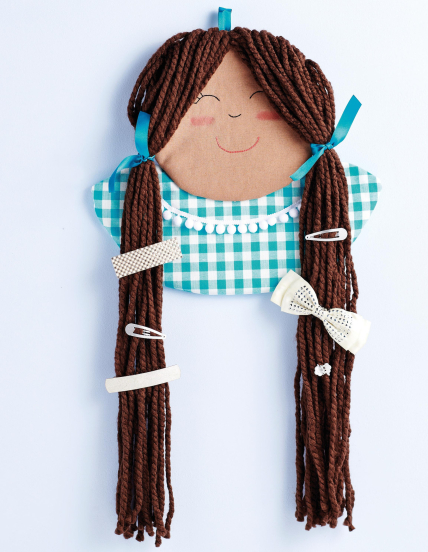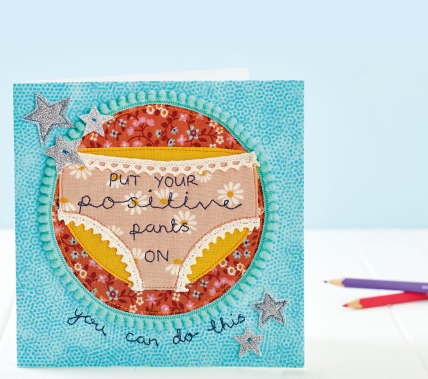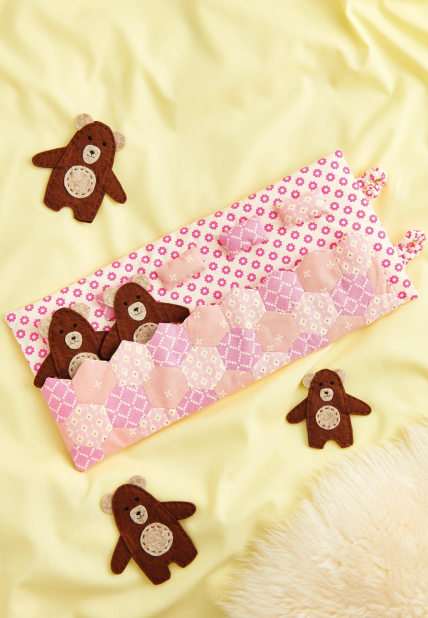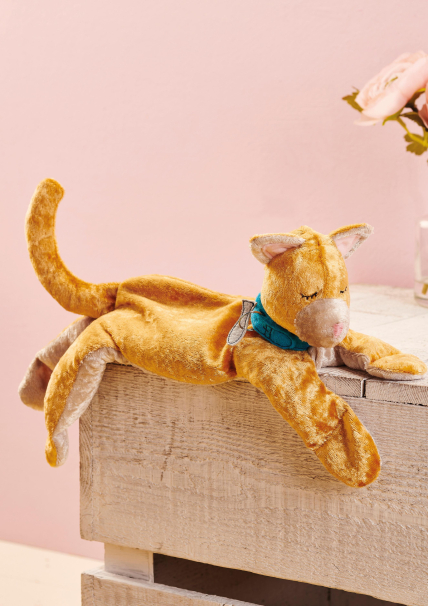Sewing Pattern
Patchwork Picnic Mat
Patchwork & Quilting
An outdoor mat is essential for the summer months when you want to eat alfresco. We’ve created our patchwork version with oilcloth, so it is wipe clean. We’ve added coordinating floor cushions to ensure maximum comfort when you’re tucking in too.
Essentials
- Fabric, oilcloth: various patterns and weights to total 2m; solid, 1.5m or cotton
- Wadding, lightweight, 2m Cushion pads, 45cm
- Zip, 35cm to 40cm Paper, graph
- Thread, quilting, strong, contrasting colour
Dimensions List
- Mat: 105cm square
- Cushions: 45cm square
Stitch floor cushions
Cut sixteen 12cm squares of patterned oilcloth. Sew into pairs, blocks and then one large 4 x 4 block, right sides together with a 5mm seam allowance. Finger press the seams flat before top stitching in a contrast thread, 2mm to the left of each seam. The panel should measure 45cm square.
Cut four 8cm x 45cm strips of oilcloth and one 5cm x 45cm piece. Cut three 8cm x 45cm pieces of wadding and pin them to the back of the same size strips. Pin and stitch these to three sides of the patchwork panel, right sides together with a 5mm seam allowance.
Take the two leftover strips, place one against a zip edge so the right side of it is face down on the right side of the zip mechanism and there are equal amounts of fabric at either end. Stitch in place, using a zipper foot. Open out the fabric and finger press. Repeat with the other strip of fabric on the opposite edge of the zip.
Concertina fold the wider strip over the top of the zip so that the width of the whole piece is 8cm. Pin the concertina and topstitch to hold it in place, concealing but not enclosing the zip. Pin and stitch one side of this strip to the remaining side of the patchwork panel. Line up each corner and sew the strips together on the short edges.
Turn the sides of the cushion right sides out. Use a chalk pencil and ruler to mark lines parallel to the long seams but 2cm down from them. Fold the side pieces between these lines and use a strong quilting thread to sew running stitch through the layers from line to seam to create a padded, mattress type edging all the way round.
Cut a 45cm square piece of oilcloth, or make a second patchwork panel if you prefer, to create the back panel. Open the zip slightly before pinning this piece to the sides of the front panel, right sides together. Match up the corners neatly and stitch in place, ensuring the wadding is secured with the stitching. Open the zip fully to turn out the cushion cover and fill with a suitable pad. Repeat to make as many cushions as required.
Make a picnic mat
The mat is made up of small squares, rectangles and larger squares arranged in a random pattern. One small square will measure 11cm, rectangles are 11cm x 22cm, and larger squares are 22cm. Use a piece of graph paper to plan your design, making the finished piece 110cm square (10 small squares per side), or your own desired size.
Once happy with the layout, cut oilcloth into corresponding shapes. Small squares measure 12cm, rectangles are 12cm x 23cm, and larger squares are 23cm. These sizes allow for a 5mm seam allowance on each side. Lay out the fabric pieces, varying the colours and prints for maximum contrast.
Begin to sew the pieces together in blocks, right sides together with a 5mm allowance. Match up seam lines as the blocks join together for a neat finish. Finger press the seams as you go along to keep the work neat.
Cut 110cm of wadding, or measure your finished panel and cut to the same size. Trim backing fabric 3cm larger on all sides. Lay the fabrics on the floor with the backing face down, the wadding and then the patchwork panel face up. Pin together at regular intervals starting in the centre and working out in all directions.
Use a double thickness of contrasting quilting cotton thread to join the layers together. Simply sew down and back through all layers where the corners of the patchwork meet. Knot the threads tightly together several times and trim to leave 5mm tails of thread on the right side. Work from the centre out and remove pins as necessary.
Finish the edges of the mat by turning under 5mm and pinning the edges of the patchwork panel. Turn the sides of the backing fabric over the edges of the wadding and pin behind the folded patchwork so it protrudes by 5mm. Slip stitch the two fabrics together to leave a narrow border of backing fabric.








